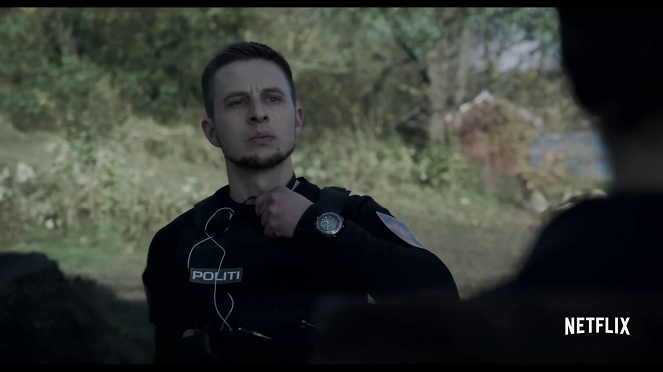Rendező:
Paul GreengrassForgatókönyvíró:
Paul GreengrassOperatőr:
Pål Ulvik RoksethZeneszerző:
Sune MartinSzereplők:
Jonas Strand Gravli, Thorbjørn Harr, Anders Danielsen Lie, Seda Witt, Lars Arentz-Hansen, Jon Øigarden, Anneke von der Lippe, Øystein Martinsen (több)Streaming (1)
Tartalmak(1)
A vérfagyasztó norvég tömegmészárlást követően egy fiatal túlélő, a gyászoló családok és az egész ország az igazságért küzd és próbál talpra állni. Igaz történet alapján. (Netflix)
Videók (1)
Recenziók (10)
A támadáson túl vagyunk az első fél órában, és nem olyan lebilincselő, mint amennyire várnánk, a film további részében pedig már csak figyeljük a társaságot, hogyan dolgozza fel az eseményeket. A traumatizált túlélő fiú és családja, Brejvik ügyvédje és családja, maga Brejvik és a bírósági per. Greengrass mesterhez képest meglepően mechanikus, unalmas mesélés, amely a traumatizált fiú szenvedésélményének mélységére támaszkodik, szemben a gyilkos megdöbbentő nyugalmával, amelyet politikai meggyőződései támasztanak alá. Greengrass ugyan felvázol néhány gondolatot, és mint információs vallomás a film hasznos, de a néző élményét tekintve az esemény borzalmainak közvetítésében Erik Poppe és az Utoya, július 22. filmje sokkal jobb.
()
Greengrass’s adaptation is as compelling as Seierstad's book. It is a pity, perhaps, only the absence of Norwegian, the fragmentation of individual motives and themes, or the cutting of the opening third of the book about Breivik himself to focus only on the procedural passage of the attack and the trial.
()
At first I wondered why someone had this story filmed twice, in addition twice in the same year ... well, and then I read the director’s name and it became clear to me – Paul Greengrass. A theme literally made for him. In addition, I would perhaps rate the film even better if I did not see the original one, which was sufficiently shocking and, especially in filmmaking respect, absolutely excellent. But I thought I would try this one, too, out of my respect for this director. And I have a few complaints. Especially about the attack itself, which was done very sloppily. But as it forms only about a third of the film, the other two thirds are able to properly engage the viewer. It milks the audience’s emotions shamelessly, as it shows not only Breivik’s thought processes, which shock you every time he appears on the screen, but alsothe youths who survived his rampage, but didn’t live through it unscathed. It’s definitely some food for thought, but the best thing is the ending, where the victims’ fates are closed by a court proceedings. It could have been about a half an hour shorter, but on the other hand it’s a classic Greengrass, so everything, including the camera, feels so natural that you will feel like the happenings depicted affected you personally.
()
I am reluctant to use the word “complex”, which for me means a film that offers numerous opposing perspectives and ambivalent impressions, which is not the case in Greengrass’s factually concise docudramatic reconstruction, in which he constructs two relatively unambiguous ideological positions (similar to Bloody Sunday), which he pits against each other so that he can offer the intended political statement in the end (threats against Lippestad only bring shades of grey into the narrative, but they are not laid out in greater detail and can also be seen as a means of supporting the argument for the power of democracy, which, regardless of the possible risks, cannot serve only those who deserve it, but everyone). ___ Good versus evil, love versus hate, a deranged individual versus a community which, thanks to mutual support and cooperation following the trauma, can get back on its feet and face evil. With his movements, cold-blooded thinking and belief in his own infallibility, Breivik is reminiscent of a machine. If we learn anything about his motives, it is from his mother’s statement, which the attorney needs because of the trial, or thanks to the fact that he has become a research subject for psychologists. In the scenes from the prison with a predominance of cold colours, he is aggressively set apart from his surroundings by his red shirt. Conversely, through flashbacks and subjective sounds, we “see into the mind” of the traumatised, insecure and vulnerable Viljar and get to know him in a number of situations with his supportive loved ones in which he gives expression to his emotions. We not only observe him, but we experience who he is. Instead of a “traitor”, a “Marxist” or a “member of the elite”, as Breivik blanketly labels his victims, we get to know an actual person and his story. As we are shown through numerous parallels in the way the two figures are depicted, Viljar is not from a certain moment most at risk from the wounds that he suffered, but rather from the possibility that he, like Breivik, is starting to become isolated from others and will stop seeing himself as a member of the broader community.___ The rhythm of the smoothly flowing narrative is masterfully set by the large number of viewpoints between which Greengrass cuts. After the dynamic beginning, which offers a broad variety of rapidly alternating viewpoints, a calming occurs and we watch only Breivik and Viljar for a moment. If the narrative jumps to another character, thanks to the prologue we are already familiar with them and we know what role they play in the web of relationships and what element of Norwegian society they represent. After this slowing down and narrowing of focus, the film also transitions from individual actions, recorded step by step almost in real time, to their more general sociological and political implications. Of course, they still serve mainly to support the arguments employed in the final trial. The whole film is a textbook example of how to apply dialectical logic in practice. It does not try to depict the reality of polarised Europe in all its complexity, but rather as a clash of two principles, which it succeeds in doing in a very factual and extremely suggestive manner. 85%
()
(kevesebbet)
(több)
Paul Greengrass serves up a dense psychological drama about the July 22, 2011 terrorist attack in Norway that killed 77 people, and he perfectly captures the horror everyone there experienced. There was another attempt this year, from Norway, Utøya: July 22, but that one didn't work very well from my point of view, it's presented in an overly documentary and boring way, no one dies and they don't even show Breivik himself. Greengrass, in contrast, describes in detail how everything took place and literally draws the viewer into the film. The opening explosion and the subsequent merciless murder of the students on the island is excellent (here the director could have spent more time than 15 minutes, but emotionally and psychologically it affected me just the same). I also praise the performance of one of the survivors, Viljar, who survived five gunshot wounds and still has to live with lifelong consequences. The film culminates in a dense trial where emotions are not spared and the hatred towards Breivik is spot on. Solid stuff. 75%
()
Galéria (41)
Photo © Netflix



Hirdetés